Instruction
Tiger Woods' four go-to shots for mastering Augusta National

Photographs by J.D. Cuban
Editor’s Note: Our Masters Preview Issue was printed before the postponement of the 2020 Masters. Read more here >>
Augusta National demands more specific shots than any other course we play on tour. It’s no coincidence that 17 guys have won the Masters at least twice, and that the same guys—even guys on the PGA Tour Champions—pop up on the first page of the leader board every year. The reason is, there are certain shots you must have if you’re going to play well there, but once you’ve mastered them—pun intended—you’ve always got a chance at the green jacket.
Take me, for example: I won the Masters at 21, when I was longer than anyone else, and I won it at 43 (last year), when I finished 44th in driving distance for the week. I always feel confident going to Augusta, because I know the shots I need to contend there, and I make sure I have them grooved before I drive up Magnolia Lane.
DRAWING A DRIVER: THINK UP AND OUT FOR THE RIGHT TECHNIQUE
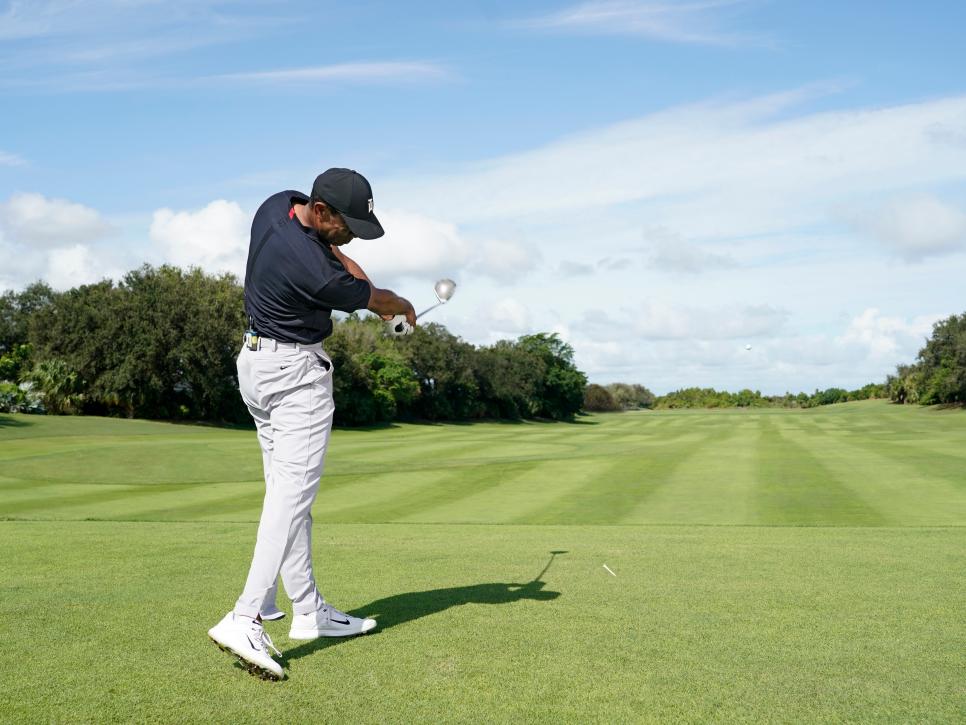
I knew I was going to have a good chance of contending when I started feeling comfortable hitting a draw with my driver in the run-up tournaments before last year’s Masters. My stock driver is a controlled cut, because keeping it in the fairway off the tee lets me take advantage of my strength—iron play. But being able to turn one over is such a huge advantage at a few holes at Augusta—especially the par-5 13th, which I birdied three out of the four days last year.
For me, hitting a draw starts with how I set up. I close my shoulders a little to the target (aligned right) and move my right foot a bit back from the target line, which helps me turn my hips better as I get older. On the backswing, I take the club more outside the target line, which helps me feel like I’m creating room to drop it under the swing plane on the way down. “Slotting” the club this way is how I get that right-to-left spin on the ball.
I hit down on the ball slightly for my normal cut, but for the draw, I have to hit up on it and swing out toward the target (above). That up-and-out feel is good if you’re trying to draw it. The height of my follow-through is an indicator of how high I wanted to hit it. If I’m trying to send one way up there, I’ll throw my hands well above my head.
SKYING AN IRON: KEEP YOUR BODY BACK UNTIL THE BALL IS GONE
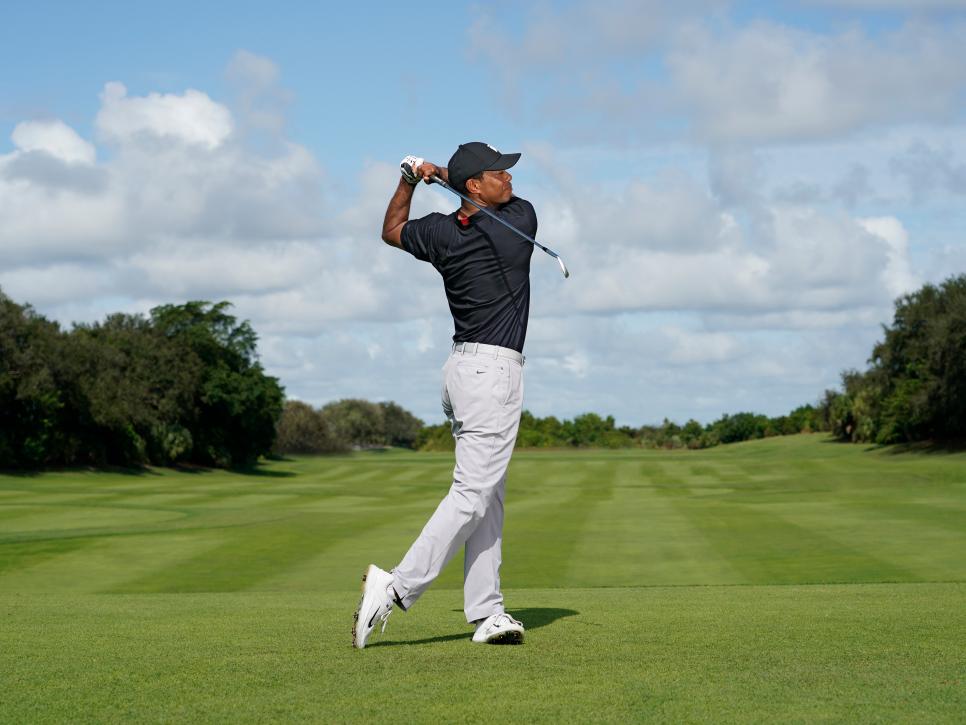
To access pins on the slopey greens at Augusta, you often have to throw the ball way up in the air and land it soft —especially on the par-3 holes like the 240-yard fourth, where they sometimes put the pin behind the bunker on the right side of the green. It’s practically all carry.
I already play my irons a bit farther forward in my stance than the average tour pro, but for those high iron shots at Augusta, I’ll move it one ball farther forward than that. The farther forward the ball is in your stance, the easier it is to deliver a good amount of loft at impact. You’re definitely not trying to trap the ball.
Two other things I do to help raise the trajectory: I widen my stance and swing back with more depth. Both set you up to shallow the club’s path into the ball, which makes it fly higher.
On the downswing, my goal is to keep my body behind the ball until impact. If you get out in front of it, even a little, the ball’s going to come off the club too low.
And just like when I’m trying to hit a high draw with the driver, my finish position indicates how I hit my approach. The higher I finish, the higher the ball flight. That feeling of extending the arms and club through impact will get the ball up.
CHECKING A PITCH: MAKE AN AGGRESSIVE SWING; DON’T BABY IT

There’s been a lot written about how Augusta’s greens separate the good putters from the pretend good putters, but it has the same effect on short games. Considering how slopey and quick the greens are, you really need to control the ball.
One shot I always hit there is a pitch that takes one hop, checks up, and then trickles out. It lets you land and stop the ball on the correct tier instead of trying to guess how much it will roll out if you played a standard pitch.
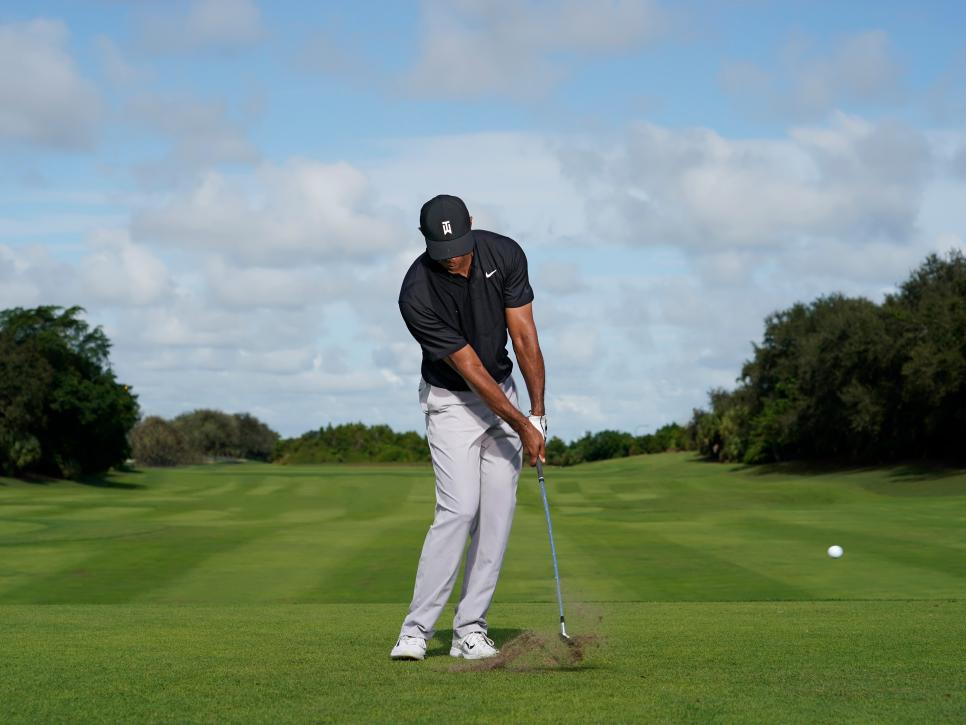
To get that kind of action, I take my 60-degree wedge, move the ball back in my stance and open the clubface a little. The ball position lowers the flight, and the open face helps impart more spin. Then I make an aggressive move hitting down on the ball, all while keeping the clubface square to where I want the ball to land (below). Hitting sharply down on it makes the ball come off hot, but with a ton of spin.
LAGGING IT CLOSE: BE PRECISE WITH YOUR LEAVE
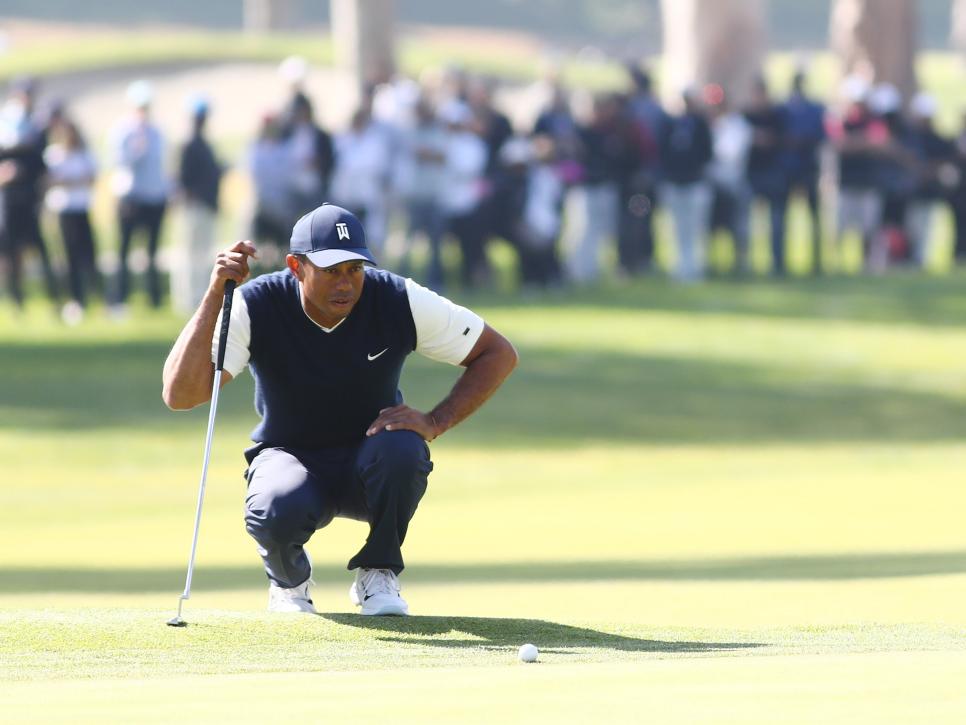
Tim Bradbury
Every year at Augusta, you’re going to have at least a few putts of 40-plus feet that traverse over a couple of ridges. The greens are so fast and severe there, speed control is crucial to avoiding bogeys or worse. The reality is, you’re just not going to make a fair number of putts. I’m sure there are greens on your course where two-putting feels like a victory.
In those low-percentage situations of holing out, the attention should be on where you want to leave the ball for your next putt. I don’t mean a zone where you want the ball to stop. I mean pinpointing an exact place. That type of attention to detail will make it a lot easier to get the result you want.
So where should you miss? Ideally, you want the ball to finish below the hole, so you can be aggressive with the comebacker and knock it in the cup without any uncertainty.
You can’t look at lag putting as if it’s giving up on a potential birdie or better. It’s a valuable short-game skill. This is especially true for us at major championships, but don’t dismiss the value of two-putting even when all you’re playing for is pride. I’ve had to be conservative on greens a ton of times-and I’ve done OK (wink wink). -WITH DANIEL RAPAPORT
MY NEW VIDEO
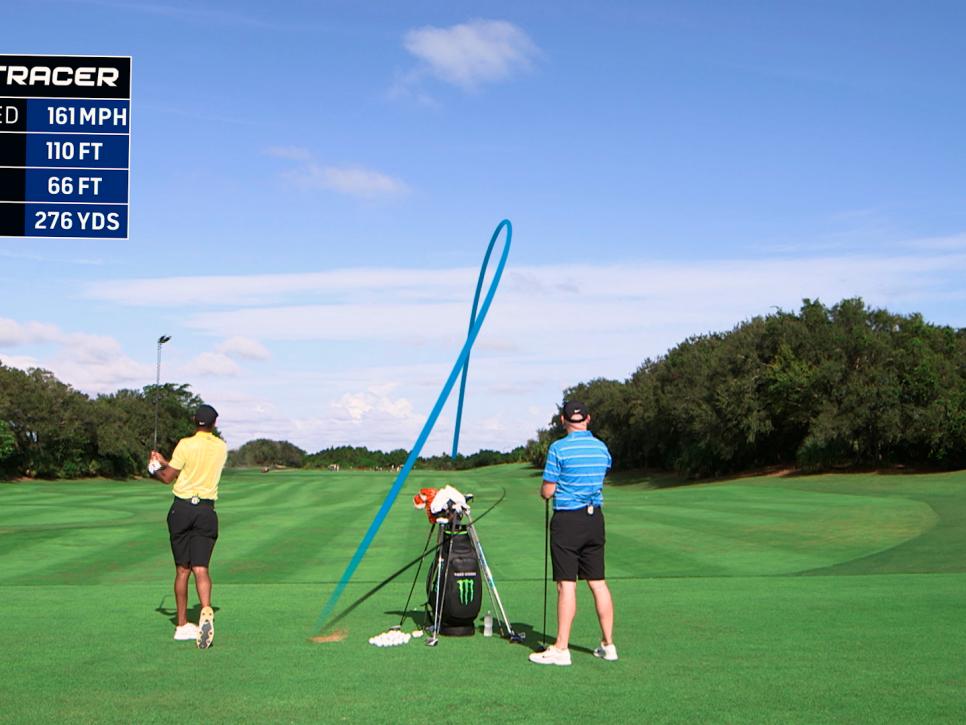
COME JOIN ME AT THE RANGE
If you’re curious what my practice sessions are like, you can watch one thanks to my new Undercover Lesson video, which is part of the Golf Digest Schools library. Click here to watch!.
We filmed it at my home course, the Medalist Golf Club in Hobe Sound, Fla. Standing next to me (above) is my buddy Rob McNamara. Rob kept me company for the video, because he often acts as my second pair of eyes when I’m practicing. I hit a bunch of shots using everything from wedge to driver that are tracked by TopTracer, which displays ball flights and data in real time. I was hitting it flush that day, which I think you’ll see and hear. While you’re at Golf Digest Schools, check out the other pros’ Undercover Lessons and tons of other content to improve your game.